The Waste of Daylight
Science and Technology
In 1907 the builder William Willett wrote a pamphlet called The Waste of Daylight (an original copy of which now resides in our Science and Technology collections). The pamphlet campaigned for Daylight Saving in the UK. 9 years later, in 1916, this came into effect in UK law and effectively changed how we experience the passing seasons. Read on to find out more about what Daylight Saving is and why Willett wanted it implemented...
What is daylight saving time?
Daylight saving time (DST) or summer time is the practice of advancing clocks during summer months so that sunrise and sunset are later each day according to the clock.
The current implementation of daylight saving time is to set clocks forward by one hour in the spring ("spring forward") and set clocks back by one hour in autumn ("fall back") to return to Greenwich Mean Time (GMT). In other words, there is one 23-hour day in late winter or early spring and one 25-hour day in the autumn.
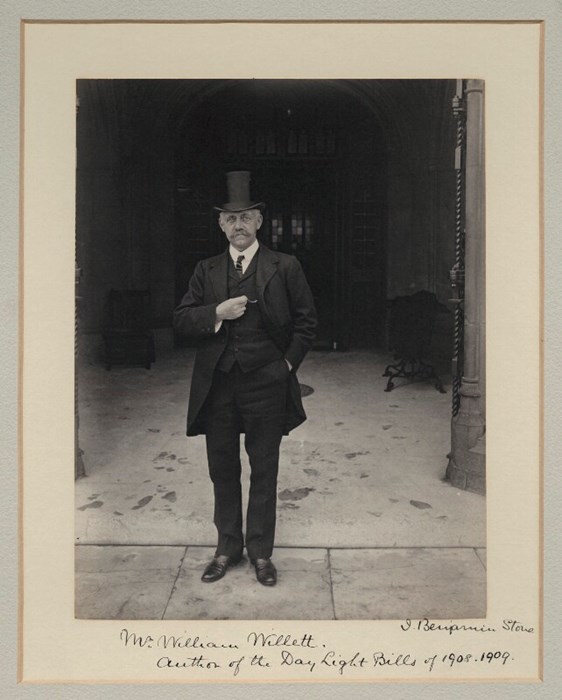
William Willett by Benjamin Stone, 1909, CC BY-NC-ND 3.0, National Portrait Gallery.
A builder proposes saving time
It was William Willett who was one of the first advocates for Daylight Saving Time (DST) in the United Kingdom. In 1907, he published a pamphlet called The Waste of Daylight, campaigning to advance clocks at the beginning of the spring and summer months and to return to GMT in the autumn. He wanted to encourage people to get out of bed earlier in summer.

Illustration of moving the clocks forward an hour in the spring and back in the autumn.
“Everyone appreciates the long light evenings. Everyone laments their shrinkage as Autumn approaches, and nearly everyone has given utterance to a regret that the clear bright light of early morning during Spring and Summer months, is so seldom seen or used. Nevertheless Standard time remains so fixed, that for nearly half the year the sun shines upon the land, for several hours each day while we are asleep…
- William Willett
Advantages of being outside

Family group walking down the path at the National Museum of Rural Life.
“Now, if some of the hours of wasted sunlight in Spring, Summer and Autumn could be withdrawn from the beginning, and added to the end of the day, how many advantages would be gained by all, in particular by those who spend in the open air…
- William Willett
The 1908 Daylight Saving Bill was the first attempt in the UK to move clocks forward one hour in summer. The idea was to provide more daylight hours after work for the training of the Territorial Army, to reduce railway accidents, and to reduce lighting expenses. Among the various objections was a concern for lower milk yield:
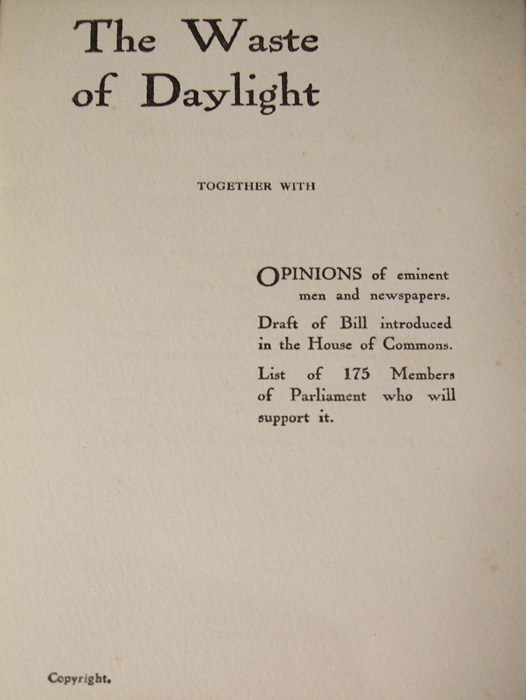
Excerpt from The Waste of Daylight pamphlet
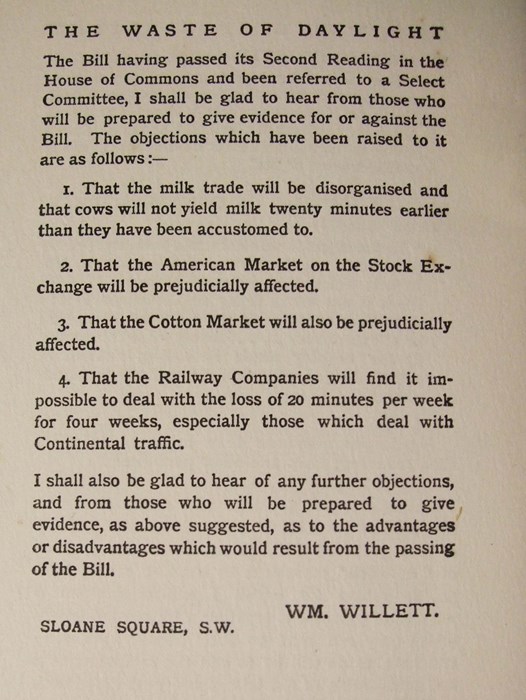
Excerpt from The Waste of Daylight pamphlet (National Museums Scotland owns an original copy)
“That the milk trade will be disorganised and that cows will not yield milk twenty minutes earlier than they had been accustomed to.
- William Willett

Moving the Ayrshire dairy herd at the National Museum of Rural Life.
Willet’s scheme called for a clock change of 20 minutes on each of four Sundays in a row, in order to minimise the disruption to biological clocks, of people or cows, at the expense of remembering four separate clock changes for a total difference between summer and winter time of 80 minutes.
The House of Commons eventually rejected the Daylight Saving Bill and sadly William Willett died of the flu in 1915 aged 58 and never lived to see his daylight saving ideas become law.
Conserving coal
The idea resurfaced during the First World War when the need to conserve coal made the suggestion of daylight saving more crucial. Germany had already introduced a similar scheme when the Summer Time Act was finally passed in the UK on 17th May 1916. The clocks went forward one hour on the following Sunday, 21st May.
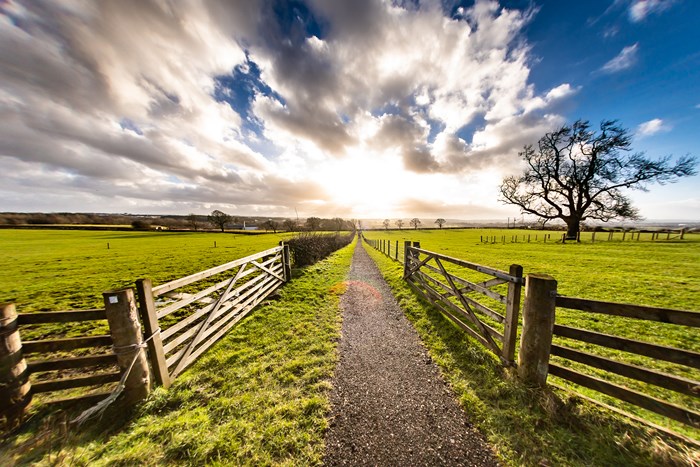
Fading sunlight over the fields at the National Museum of Rural Life.
Double Summer Time
During the Second World War, in 1941 Britain adopted British Double Summer Time, which saw clocks being put forward two hours ahead of GMT. The clocks were turned back to GMT at the end of summer 1945. However because of severe fuel shortages resulting from the harsh winter of 1946/47, the UK returned to British Double Summer Time during the summer of 1947.
For and against
Since its introduction, Daylight Saving Time has had both its advocates and critics. Advocates for the system claim the lighter summer evenings save energy, reduce traffic accidents and get people out and about and more active.
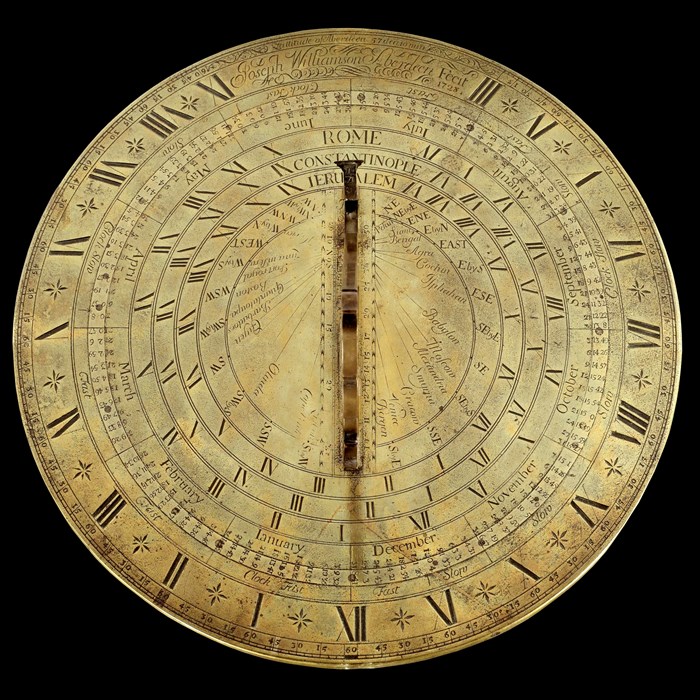
This horizontal sundial made by Joseph Williamson, Aberdeen in 1728. It shows how long the summer days are in the north of Scotland. The sundial only works when the sun is up, and this goes from 03:00 to 23:00! (T.1975.171).
Critics however claim that if adopted all year round, this would result in darker winter mornings which would be more dangerous for children going to school and for those in the north and Scotland, the sun would not rise until well into the morning leaving farmers working for several hours in the dark each morning in the winter. Some argue that because of this, England and Wales should have their own time zone and Scotland and Northern Ireland, another.

Electrical digital clock by Pifco, 1960 - 1976 (T.1976.41).
Time today
Today the United Kingdom observes Greenwich Mean Time (GMT) during the winter months and British Summer Time (BST) in the summer months.
The country follows the same DST schedule as most of Europe, setting the clocks forward one hour on the last Sunday in March and back again one hour on the last Sunday in October.
Header image
Working model of a tower clock in the Grand Gallery at the National Museum of Scotland (T.1921.20).
from Hacker News https://ift.tt/38G1QQG
No comments:
Post a Comment
Note: Only a member of this blog may post a comment.